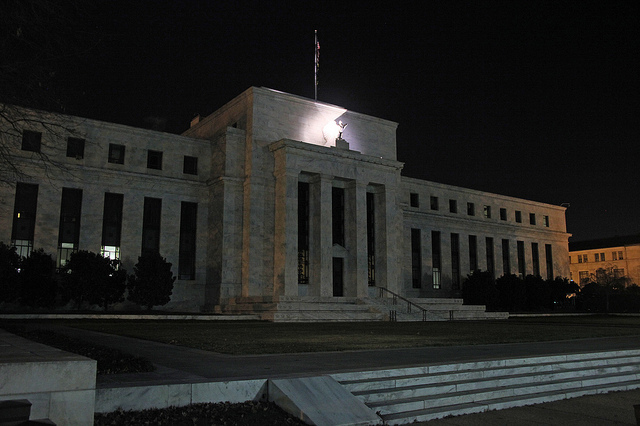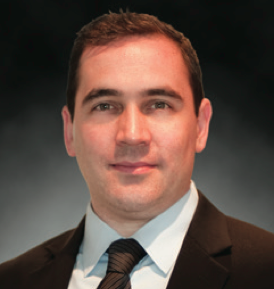In courtship, it is often advisable to cultivate an air of mystery. Reveal everything (figuratively) to a potential suitor, and you are no longer in control of the conversation. The Federal Reserve long ago abandoned their own air of mystery, and decided to reveal everything to the market by publishing their rate projections. But the only problem is that the market does not believe the Fed’s “dot plots”. The Fed insist they are likely to hike rates several times, but the market found that as believable as a blind date claiming they are actually a secret agent.
In an effort to rekindle the romantic mystique, the Fed has been trying to generate a bit more uncertainty. First the minutes to the last meeting stressed that June was a ‘live’ meeting. So, despite the market’s scepticism, the Fed would likely vote on whether to hike rates next month. Then Bill Dudley, the influential President of the Federal Reserve Bank of New York, commented that the market was now more appropriately pricing in the probability of a June rate hike. Before the minutes the market had only priced in a 4% chance of a rate hike in June; that has jumped to almost 30% (Chart 1). And the probability of two rate hikes this year doubled from about 30% to 60%.
The pricing of rate hikes has been on a bit of a roller-coaster ride. When fears for the US economy were at their peak back in February, the market decided rates were on hold. Then right before the March meeting the probabilities rose once more, only to plummet again when Fed Chair Janet Yellen came across as more dovish. Despite the improvement in the probability of a June rate hike, the likelihood is still priced below where it was in March.
And it is not just this year’s rate hikes. The market has even less faith in the Fed further out. The path of rates set out by the fifth most dovish dot in the dot plots (which is probably closest to Chair Yellen) still implies yield curves well above the actual market yield curve. The disconnect can be divided into beliefs about the speed of rate hikes, and also the terminal rate at which yields peak (see Economist Insights, On the Dot, for more details). This divergence widened significantly compared to last year, despite the most recent rise in bond yields (chart 2).
Last year, the divergence between the Fed and the 3y US Treasury (UST) was all about the timing of hikes. But this year yields moved so low that the difference between the two is increasingly driven by divergences in the long-run rate (the rate at which interest rates get close to their natural rate). The divergence in the 10y UST demonstrates that the market is as doubtful as ever about the Fed’s timing of rate hikes, but even more doubtful about where rates will peak.
Trendy
The market is telling the Fed that growth is going to be lower and that inflation is not going to warrant rate increases. Some commentators argue that rates should stay low for longer because trend growth is lower. Unfortunately, this does not make any sense from the Fed’s view of how monetary policy works
If you believe that trend growth is now lower, then economic theory will tell you that you will need to hike sooner but the rate hiking cycle will stop at a lower rate than in the past. This is because a lower growth in trend, or potential, output means that the gap with actual output is smaller. The smaller this output gap is, the more likely that you will get inflation. But in any case the Fed’s objective is not actually high growth. The Fed’s dual mandate is maximum employment and stable price. So the metric for the the Fed is how tight the labour market is. The logic is similar to the output gap: what is the difference between the current unemployment rate and the neutral rate.
The Fed is kind enough to tell us what their estimate of the neutral rate is, so we can get an idea of their forecast for the unemployment gap. Every year the Fed has been forecasting that the unemployment gap was gradually closing, and it is one indicator where they have routinely been too pessimistic rather than optimistic (chart 3). They forecast the gap to have closed in 2015 and moved into being outright tight from 2016.
When the unemployment gap closes, the Fed expects wages to start rising and inflation pressures to rise. Economic theory also tells us that when the gap is closed interest rates should not be loose – they should be neutral. The Fed’s median estimate of the neutral rate is 3.25%. The current rate is just 0.375%.
Not every Fed member would agree with this logic. Chair Yellen herself has in the past talk about ‘optimal control’, the idea that you might want to keep monetary policy looser than you normally would but hike faster later on to compensate (and possibly hike beyond neutral). But nonetheless the
Fed was rightly concerned that the market had completely disregarded the possibility of rate hikes. If markets were not even entertaining the possibility of hikes, there could be a lot of disruption if the Fed surprises them.
Then again, if the Fed really wants to change market behaviour, maybe they should have just surprised them. After all, an air of mystery loses a lot of its impact if you go around telling people that you have an air of mystery.
Joshua McCallum is Head of Fixed Income Economics UBS Asset Management.





